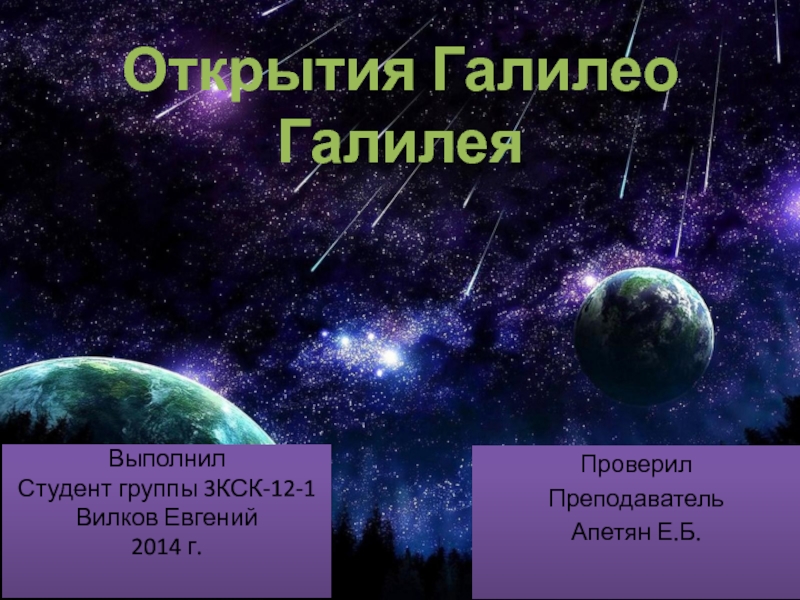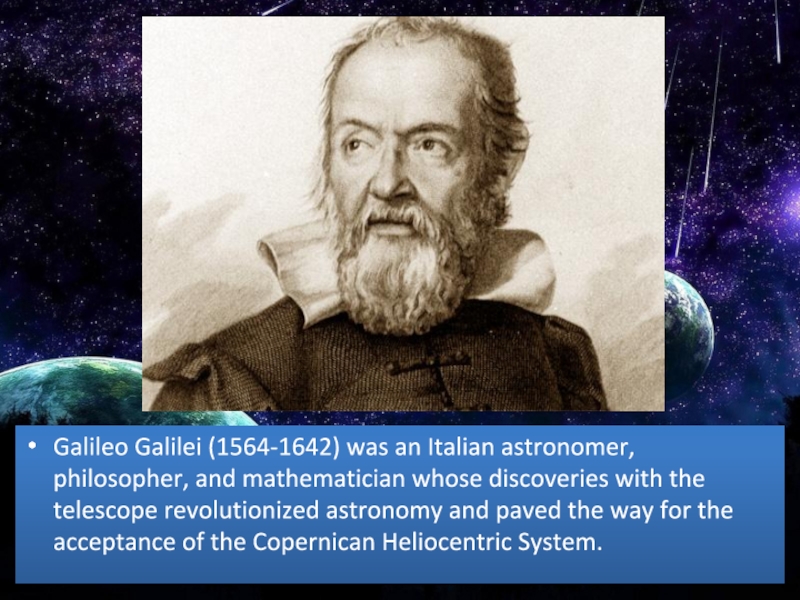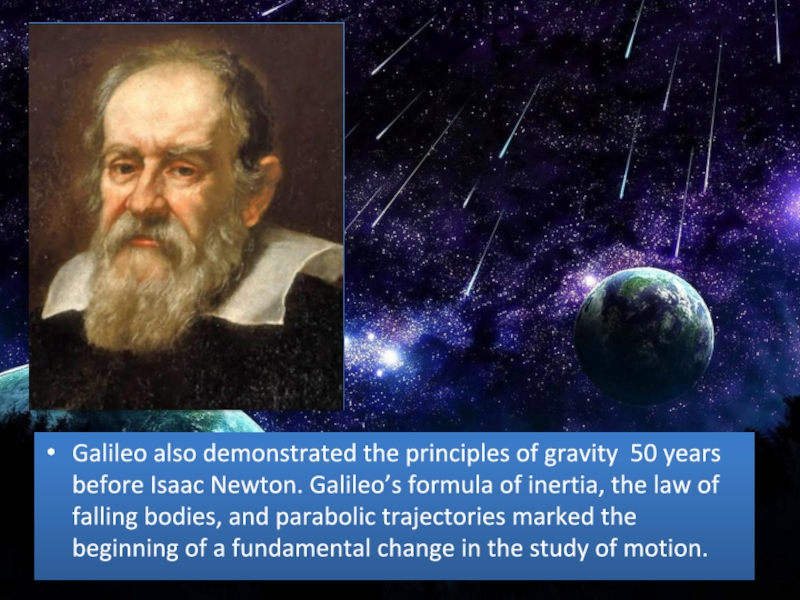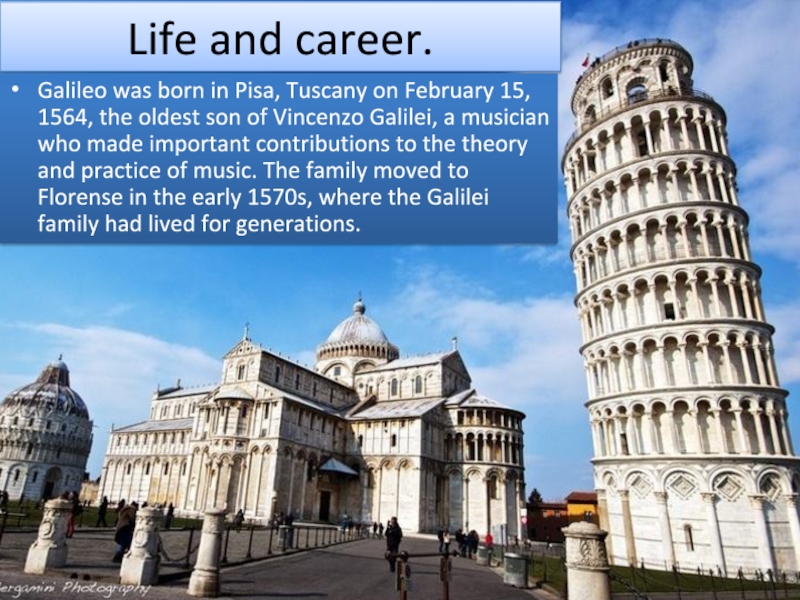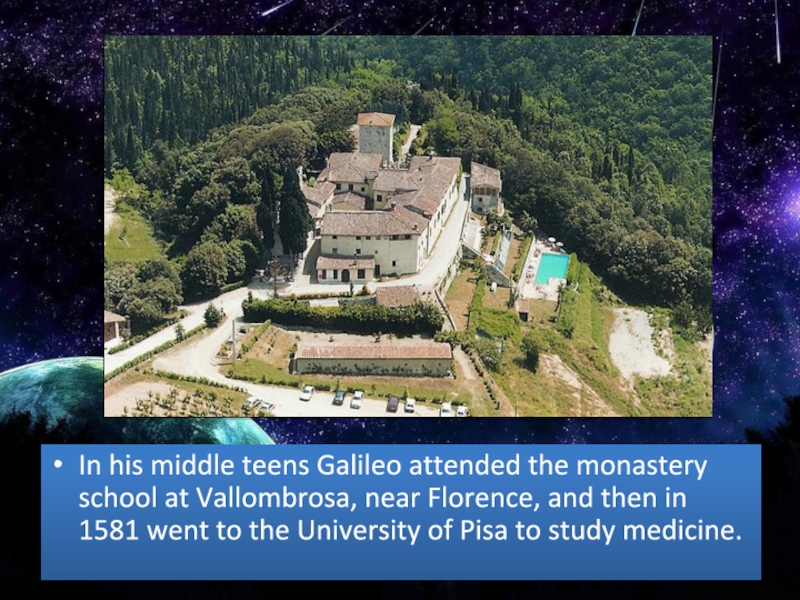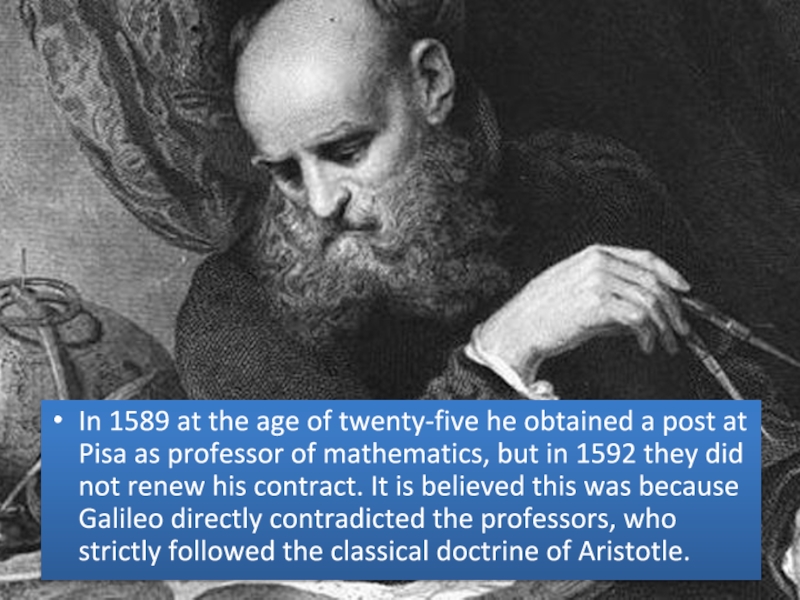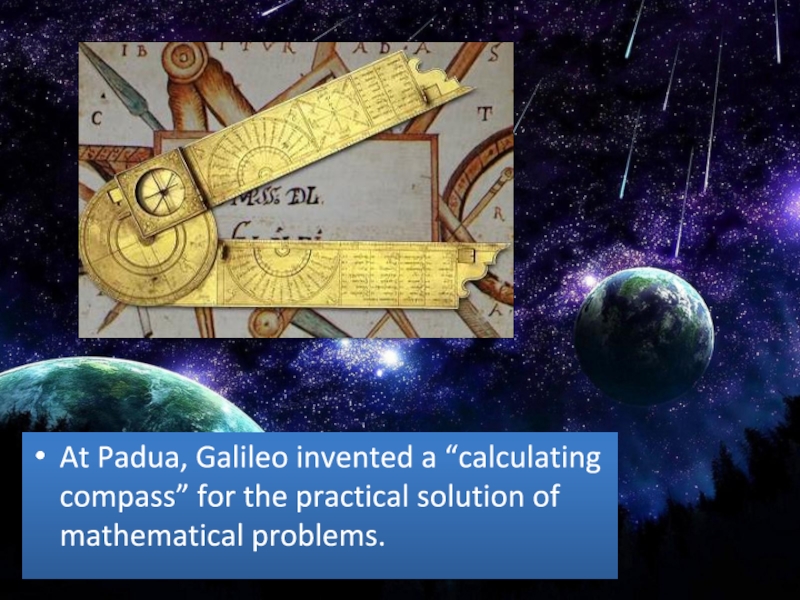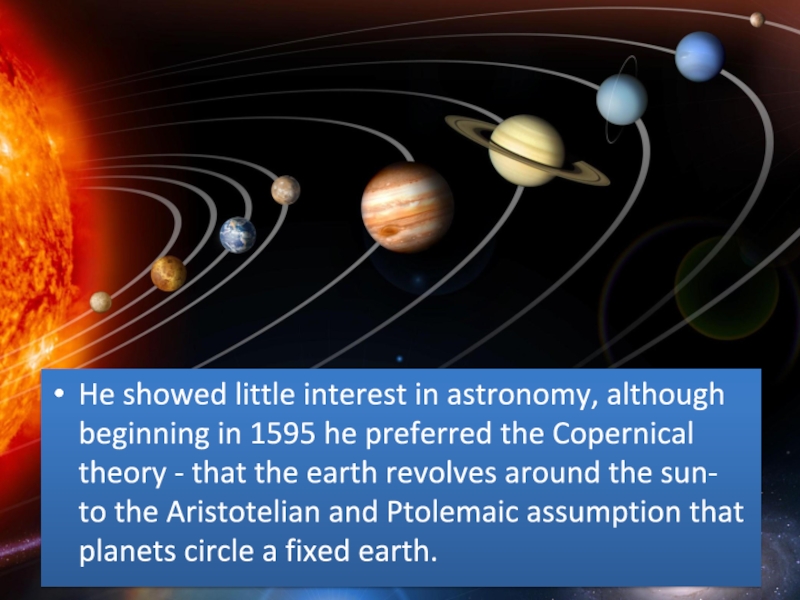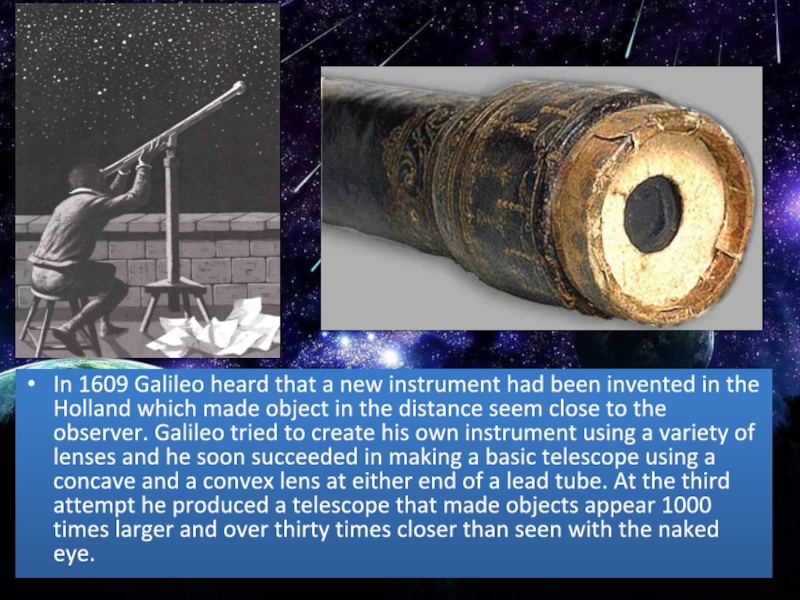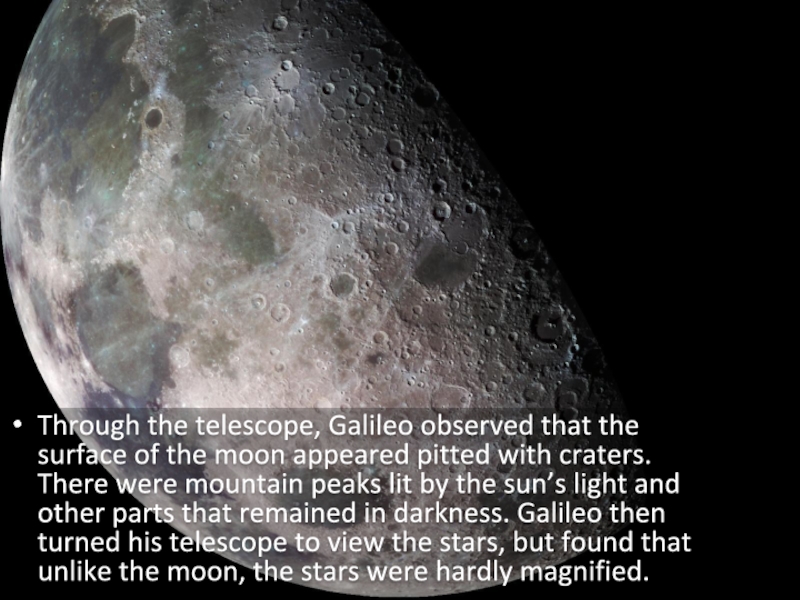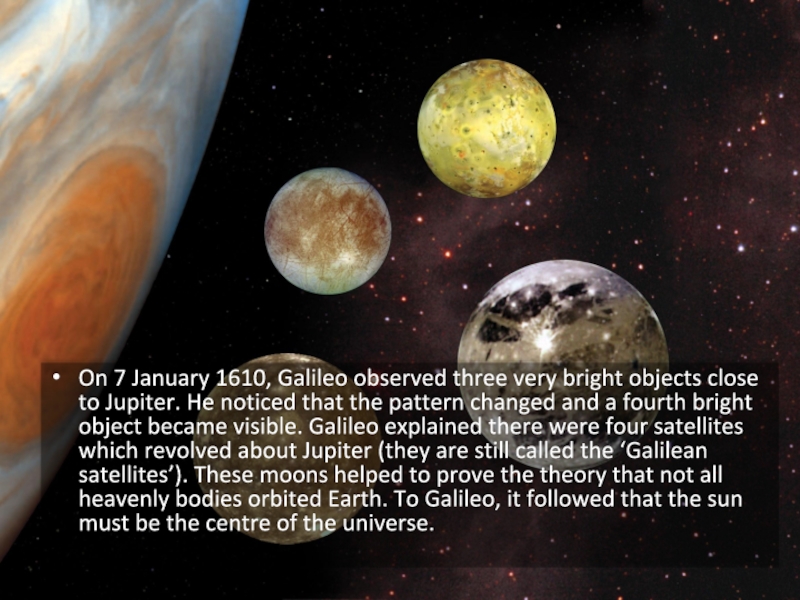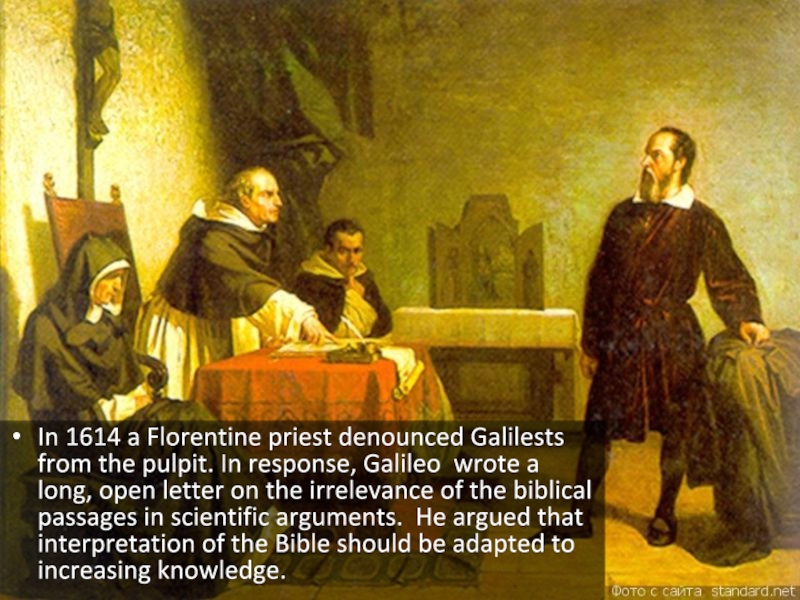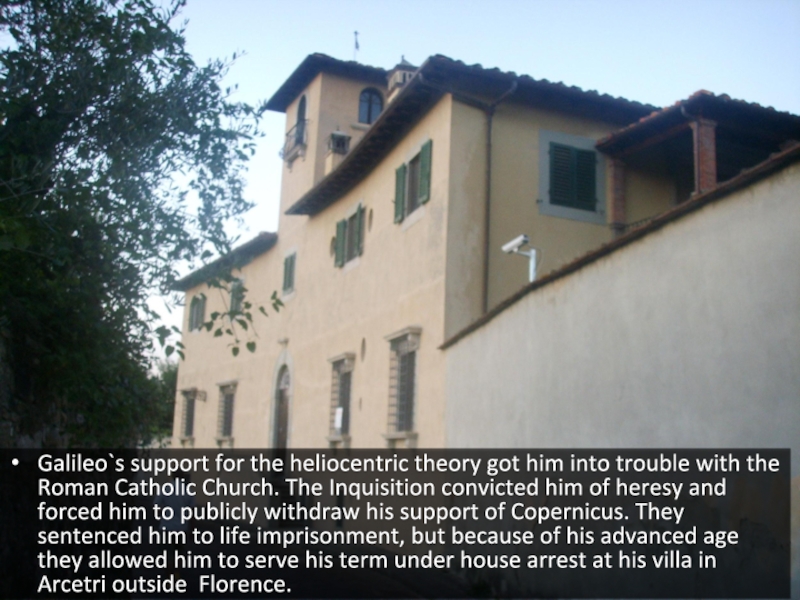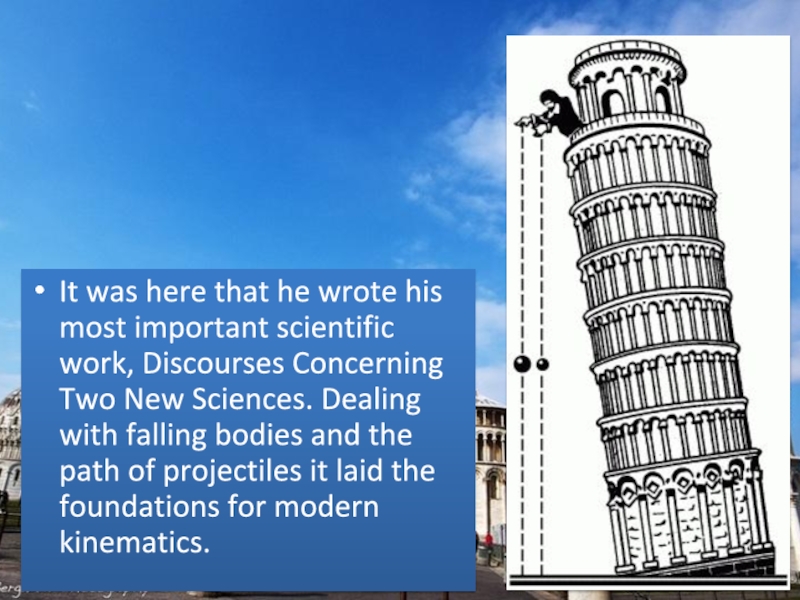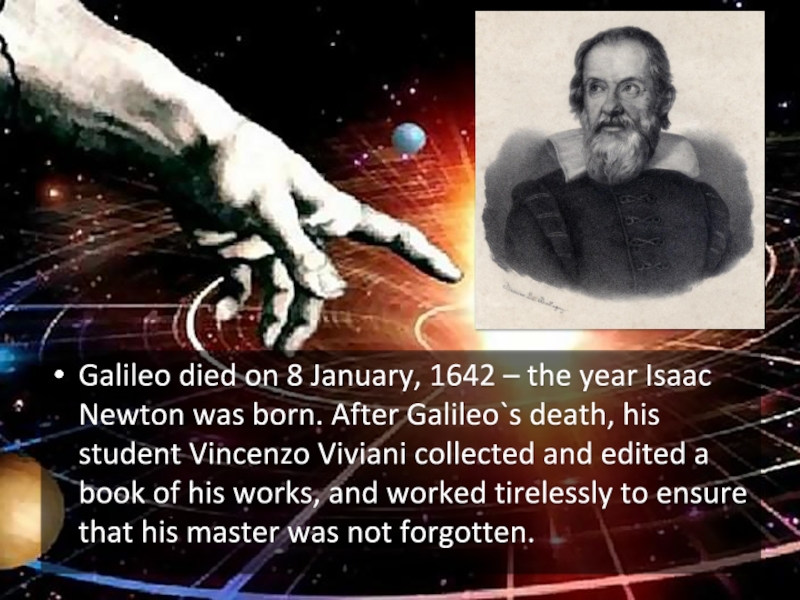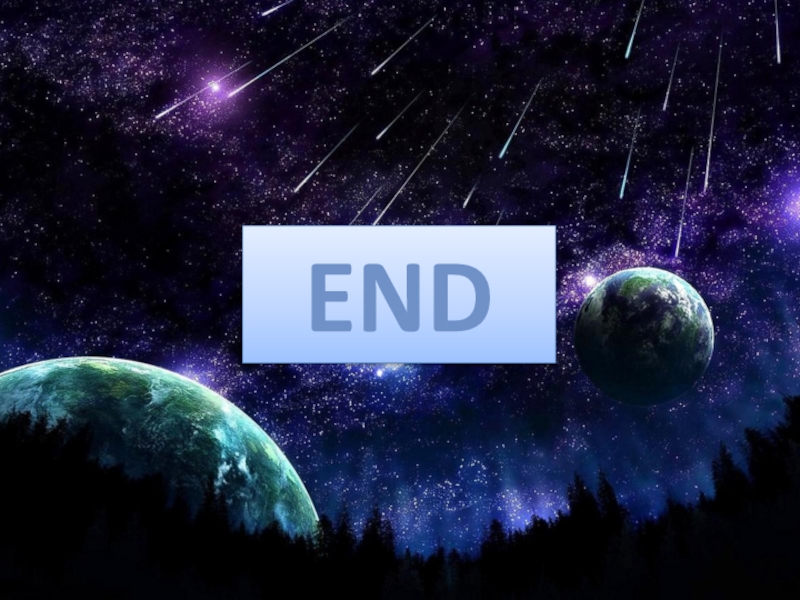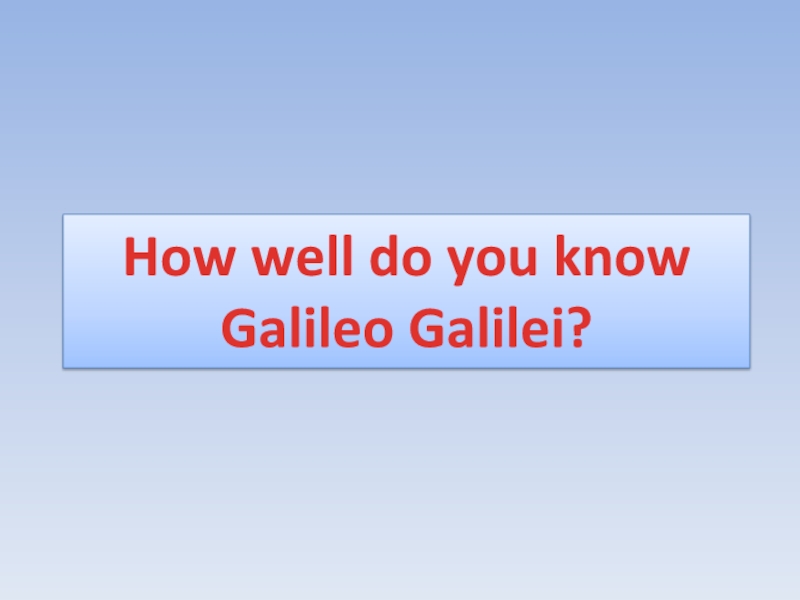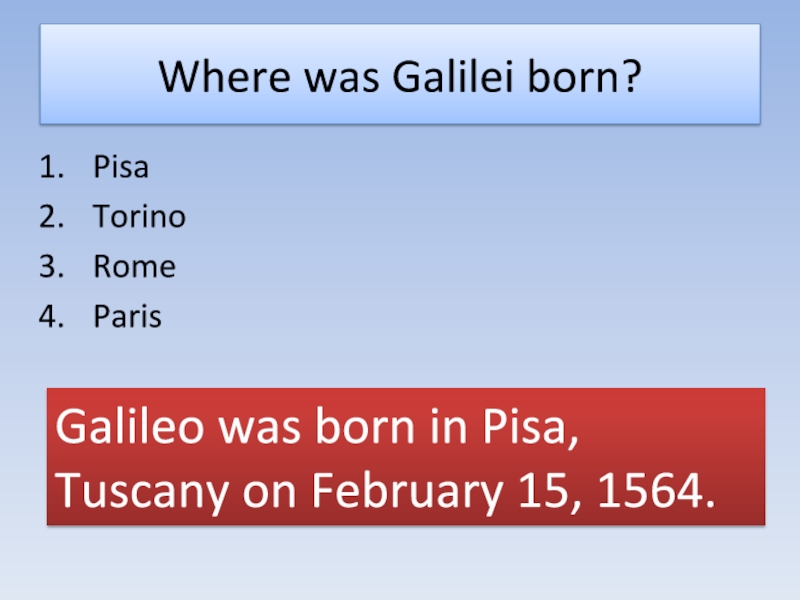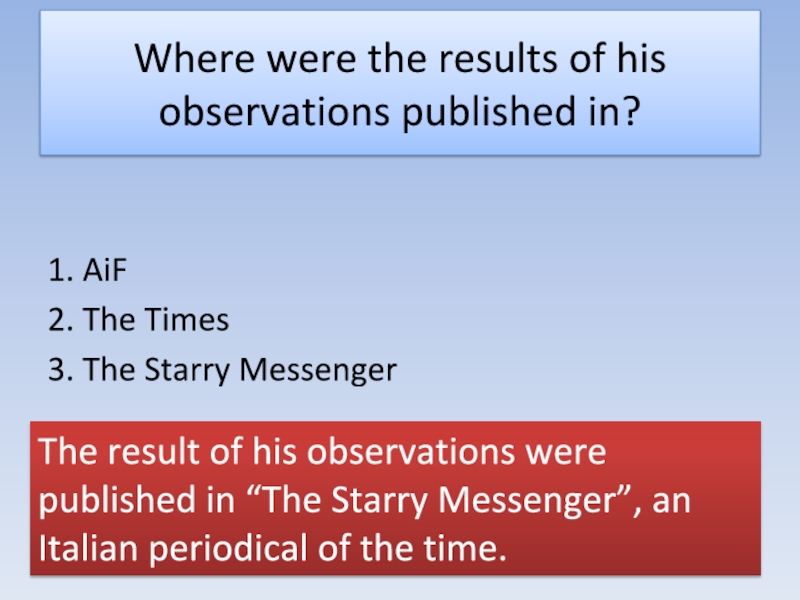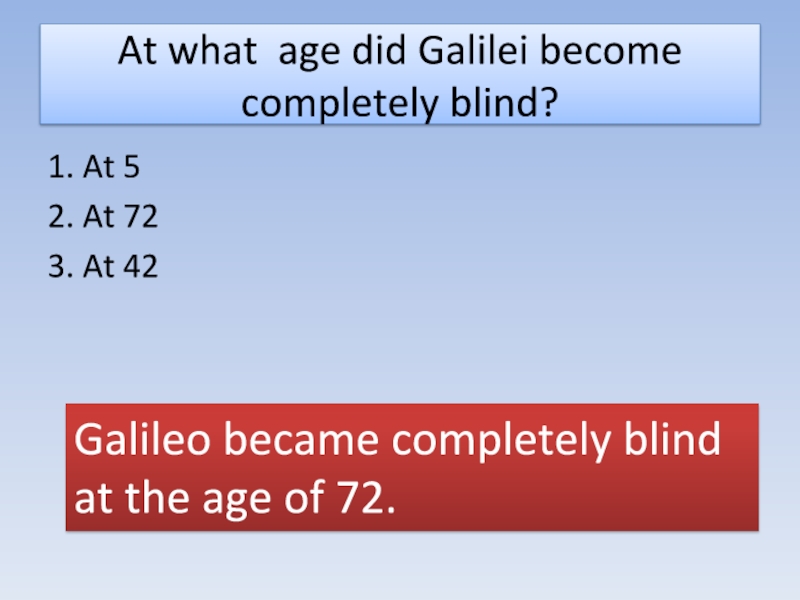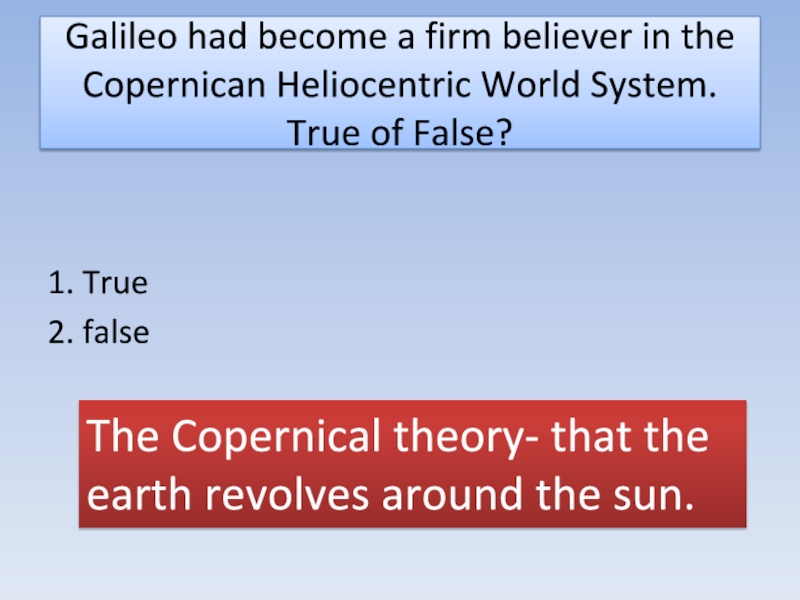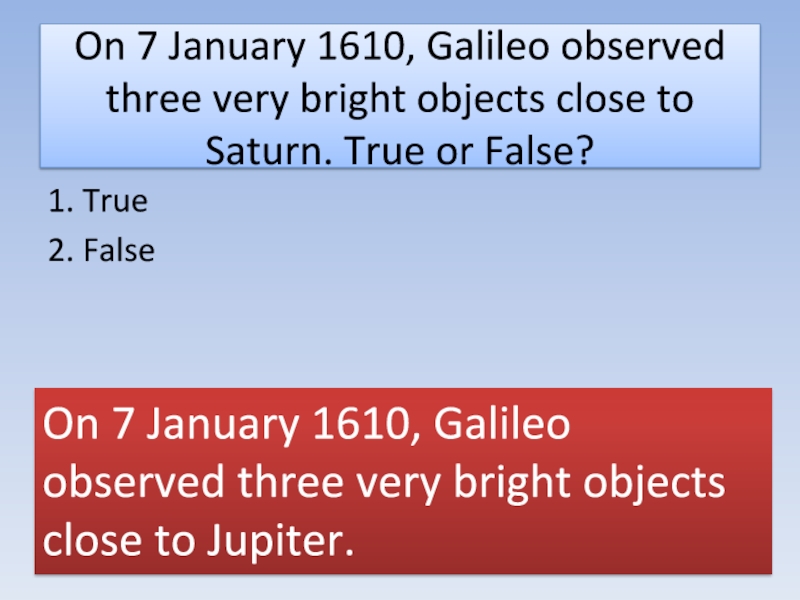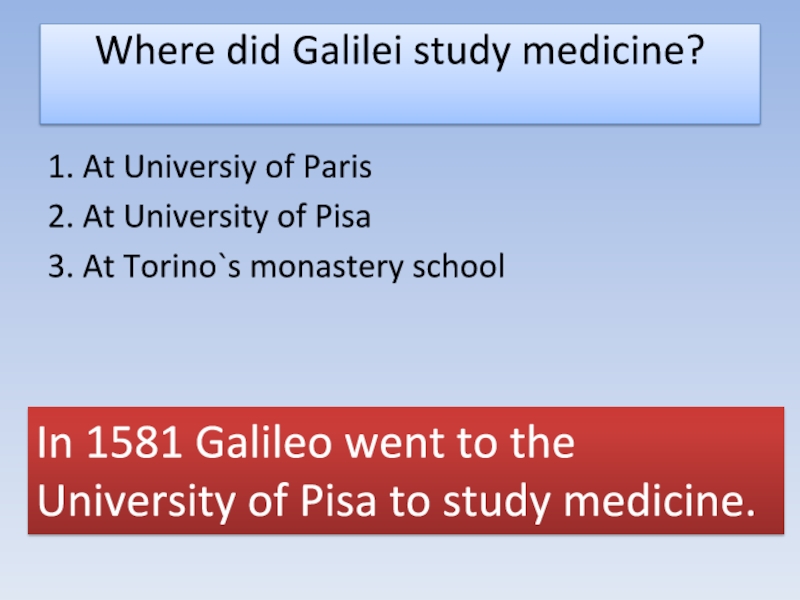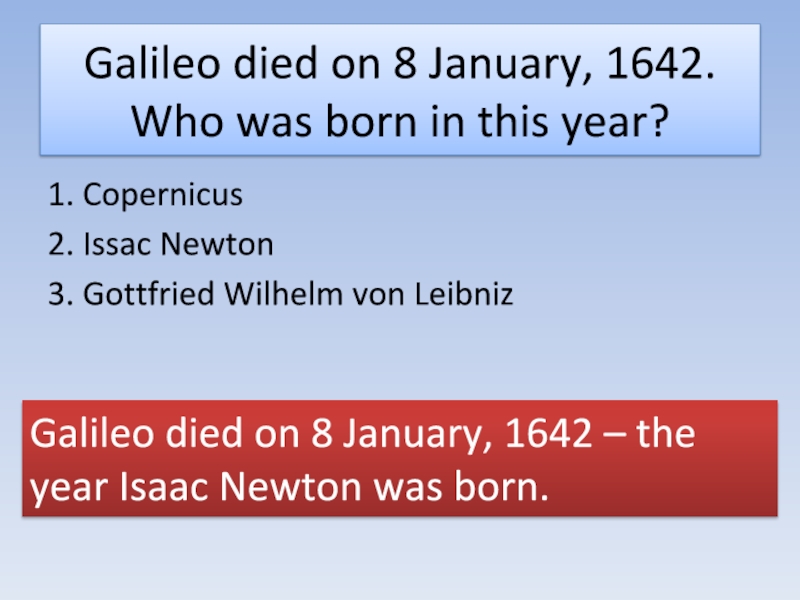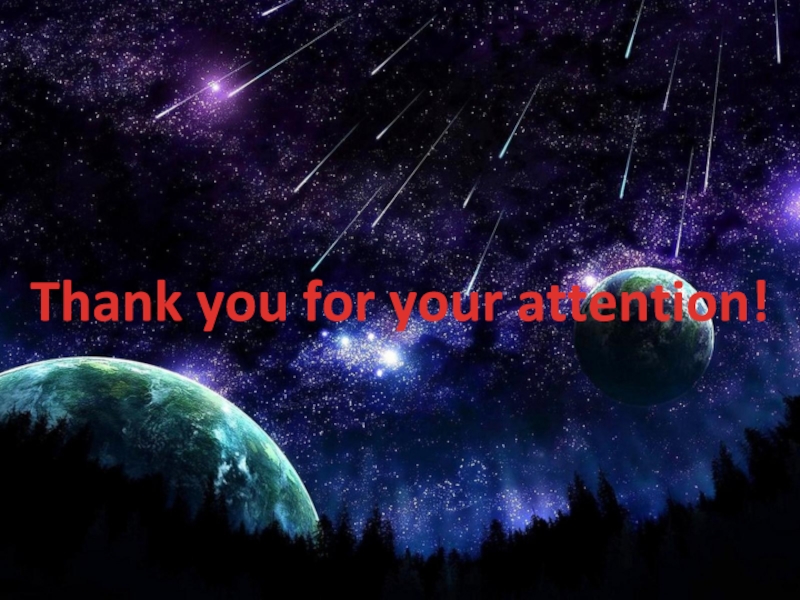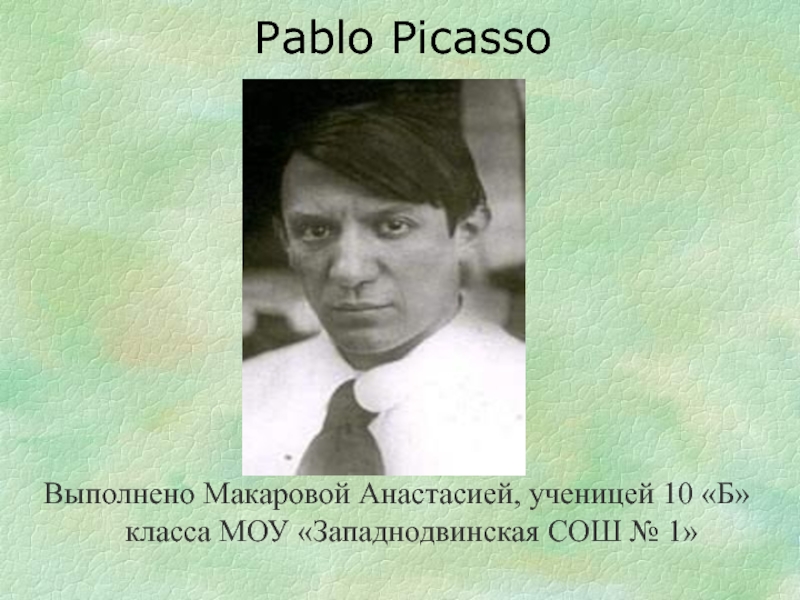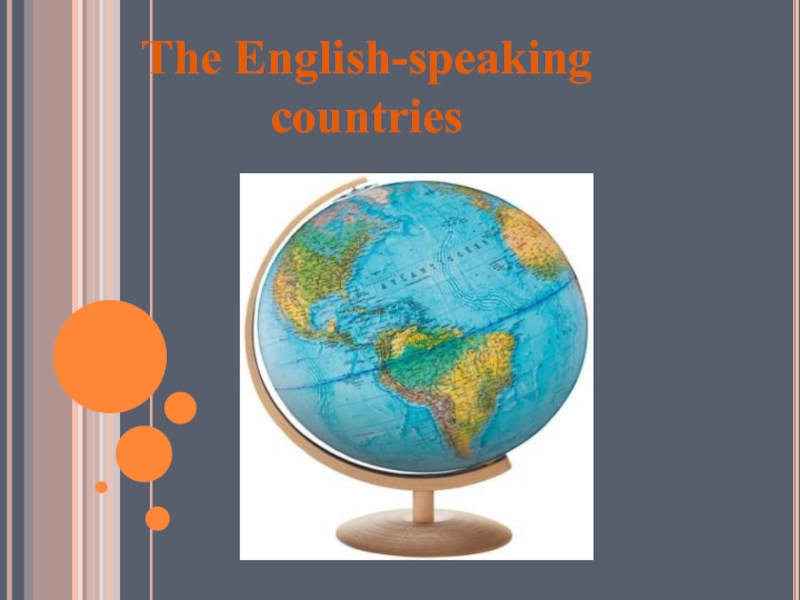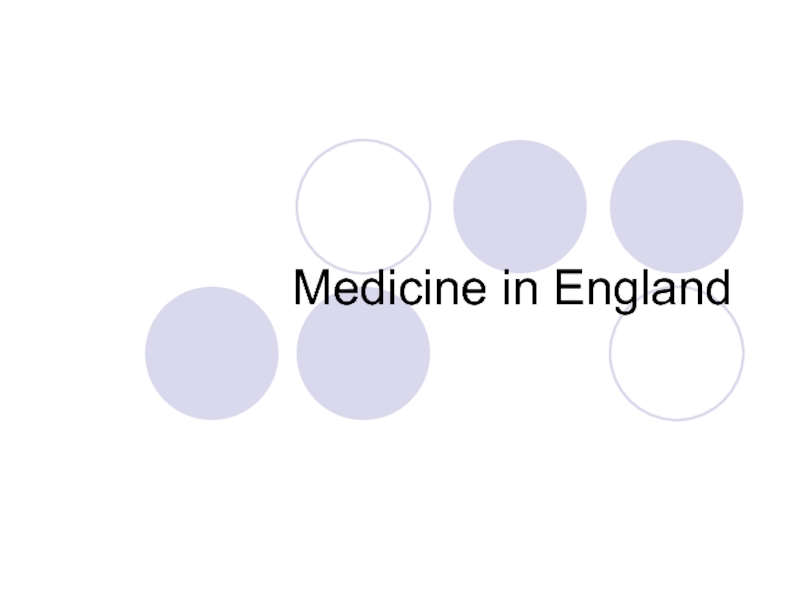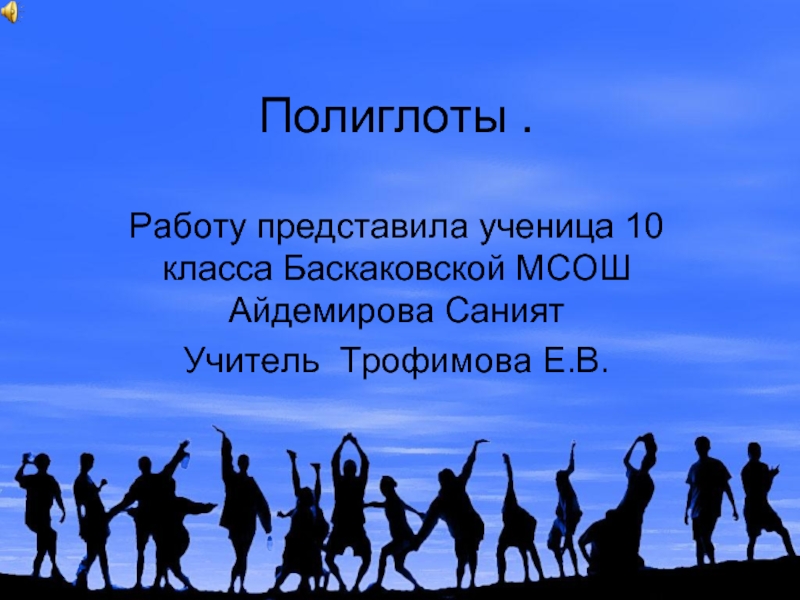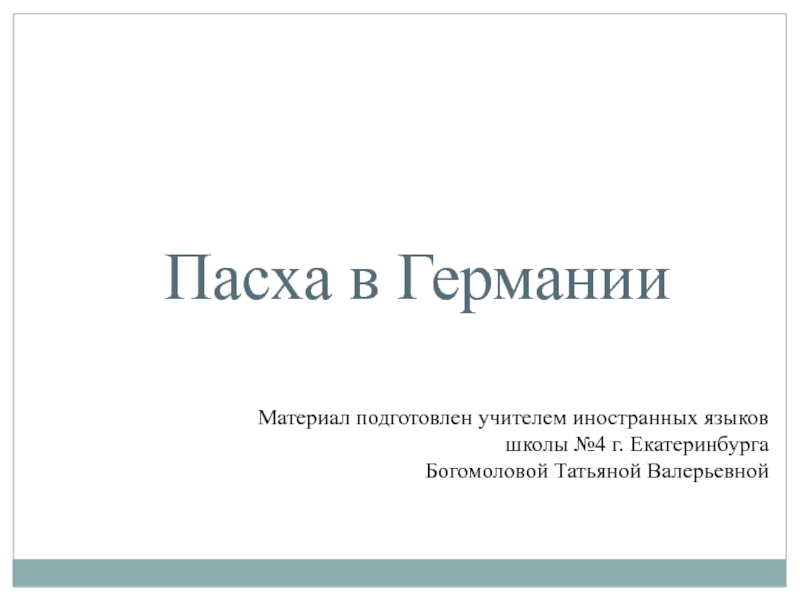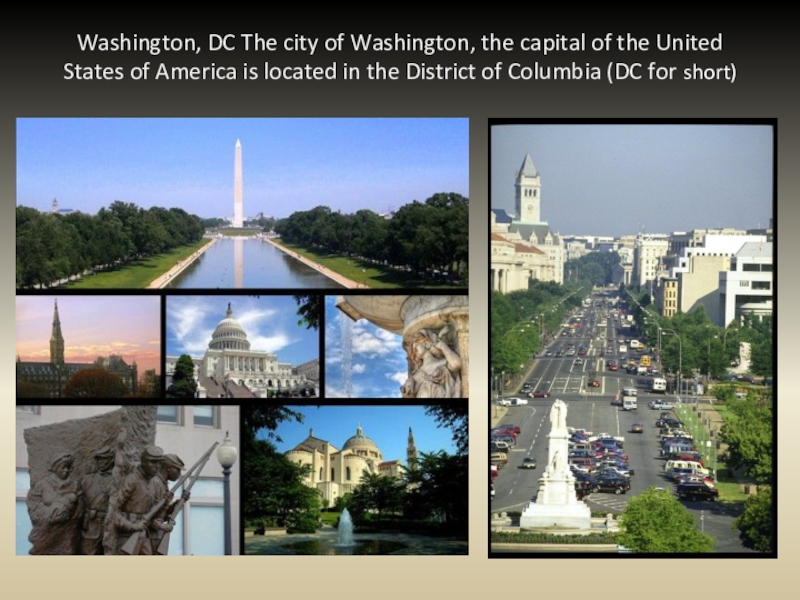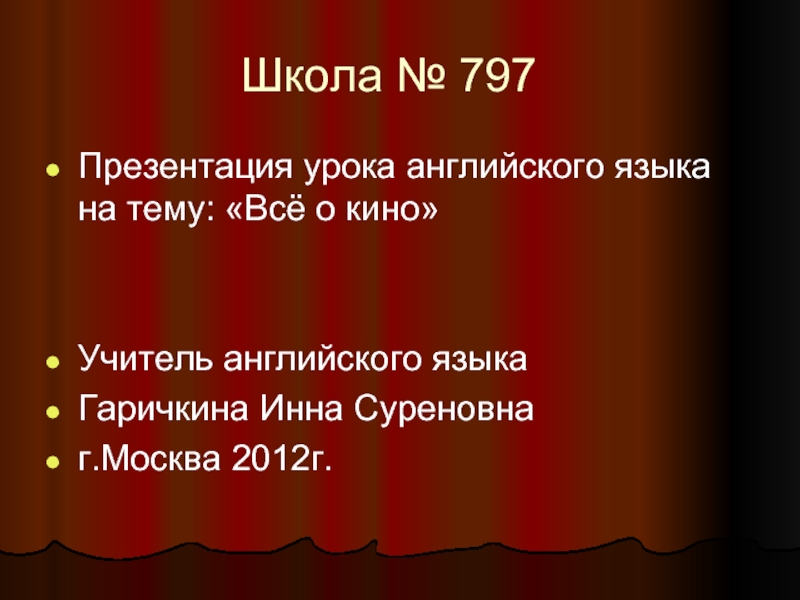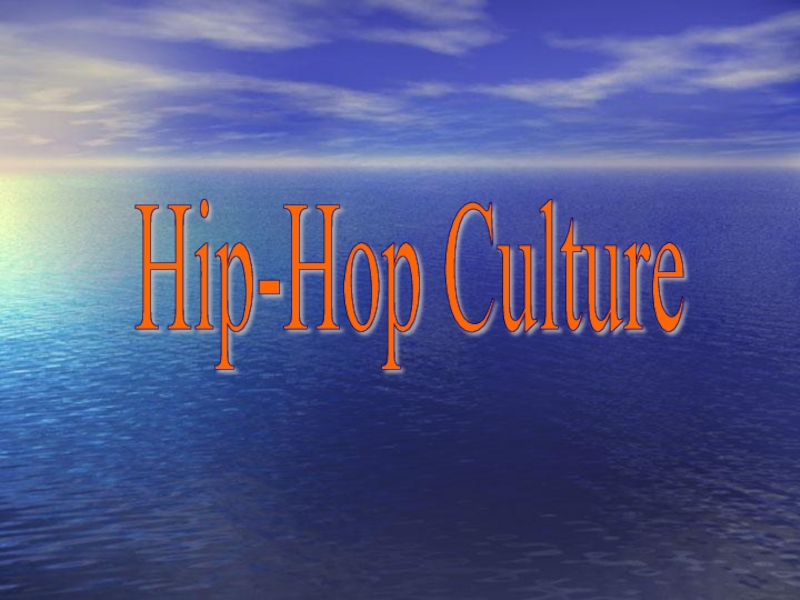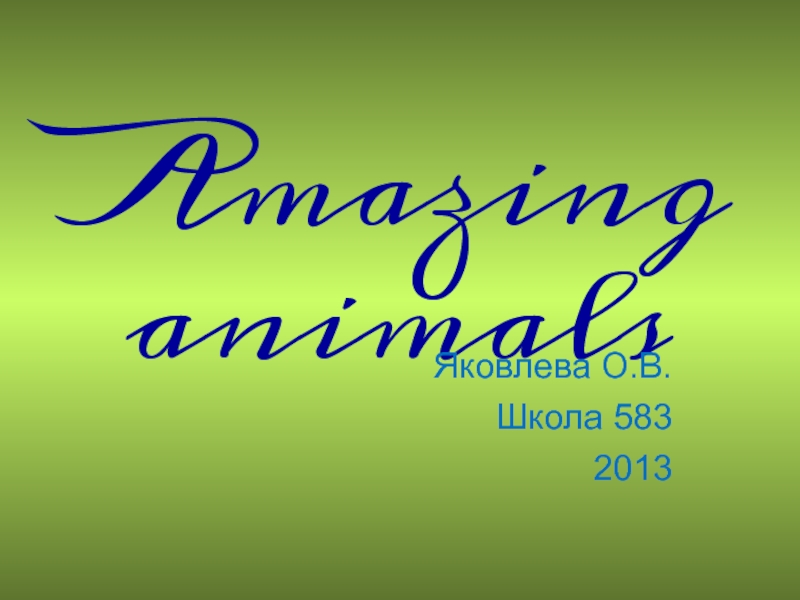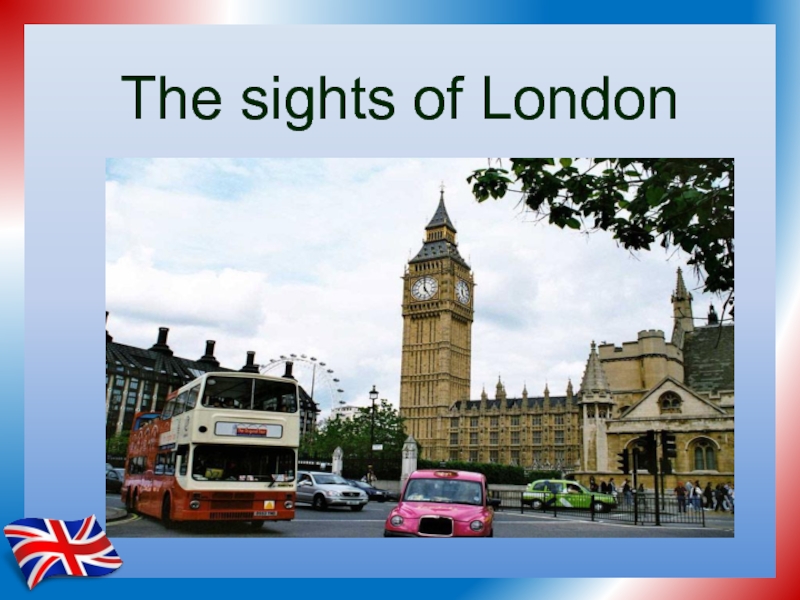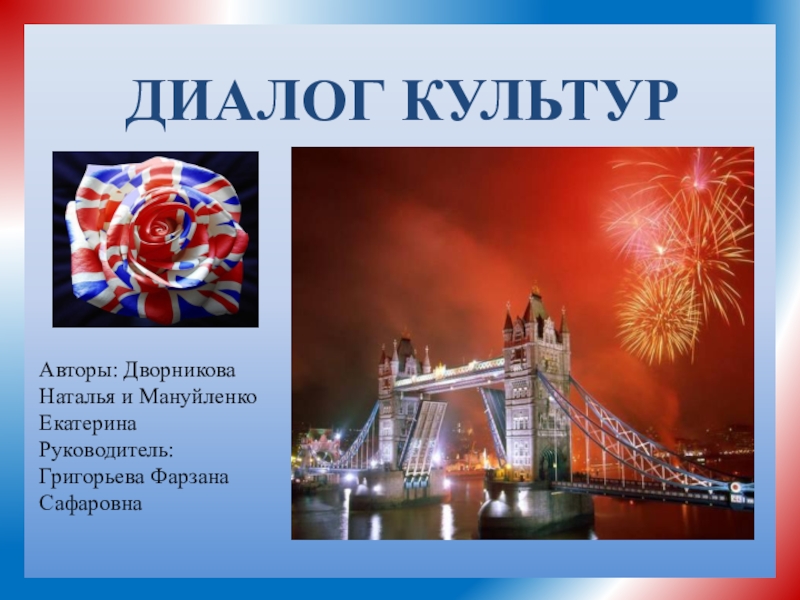Слайд 1Выполнил
Студент группы 3КСК-12-1
Вилков Евгений
2014 г.
Открытия Галилео Галилея
Проверил
Преподаватель
Апетян Е.Б.
Слайд 2Galileo Galilei (1564-1642) was an Italian astronomer, philosopher, and mathematician
whose discoveries with the telescope revolutionized astronomy and paved the
way for the acceptance of the Copernican Heliocentric System.
Слайд 3Galilei was the first to use the newly invented telescope
to study celestial objects. He was the first to see
Saturn’s rings (although his telescope was not good enough to clearly show them as rings).
Слайд 4Galileo also demonstrated the principles of gravity 50 years before
Isaac Newton. Galileo’s formula of inertia, the law of falling
bodies, and parabolic trajectories marked the beginning of a fundamental change in the study of motion.
Слайд 5 Galileo’s originality as a scientist lay in his method
of inquiry. First he reduced problems to a simple set
of terms on the basis of everyday experience and common-sense logic. Then he analyzed and resolved them according to simple mathematical description. The success with which he applied this technique to the analysis of motion opened the way for modern mathematical and experimental physics.
Слайд 6Life and career.
Galileo was born in Pisa, Tuscany on February
15, 1564, the oldest son of Vincenzo Galilei, a musician
who made important contributions to the theory and practice of music. The family moved to Florense in the early 1570s, where the Galilei family had lived for generations.
Слайд 7In his middle teens Galileo attended the monastery school at
Vallombrosa, near Florence, and then in 1581 went to the
University of Pisa to study medicine.
Слайд 8In 1589 at the age of twenty-five he obtained a
post at Pisa as professor of mathematics, but in 1592
they did not renew his contract. It is believed this was because Galileo directly contradicted the professors, who strictly followed the classical doctrine of Aristotle.
Слайд 9In 1592 Galileo’s discoveries on the centre of gravity in
solids, and pendulums, earned him a chair in mathematics at
the University of Padua, where he remained until 1610.
Слайд 10At Padua, Galileo invented a “calculating compass” for the practical
solution of mathematical problems.
Слайд 11He showed little interest in astronomy, although beginning in 1595
he preferred the Copernical theory - that the earth revolves
around the sun- to the Aristotelian and Ptolemaic assumption that planets circle a fixed earth.
Слайд 12In 1609 Galileo heard that a new instrument had been
invented in the Holland which made object in the distance
seem close to the observer. Galileo tried to create his own instrument using a variety of lenses and he soon succeeded in making a basic telescope using a concave and a convex lens at either end of a lead tube. At the third attempt he produced a telescope that made objects appear 1000 times larger and over thirty times closer than seen with the naked eye.
Слайд 13Through the telescope, Galileo observed that the surface of the
moon appeared pitted with craters. There were mountain peaks lit
by the sun’s light and other parts that remained in darkness. Galileo then turned his telescope to view the stars, but found that unlike the moon, the stars were hardly magnified.
Слайд 14On 7 January 1610, Galileo observed three very bright objects
close to Jupiter. He noticed that the pattern changed and
a fourth bright object became visible. Galileo explained there were four satellites which revolved about Jupiter (they are still called the ‘Galilean satellites’). These moons helped to prove the theory that not all heavenly bodies orbited Earth. To Galileo, it followed that the sun must be the centre of the universe.
Слайд 15The result of his observations were published in “The Starry
Messenger”, an Italian periodical of the time. The publication aroused
great controversy among scientists. Some philosophers - such as Kepler, received his work with enthusiasm, but others were far less enthusiastic.
Слайд 16By the end of 1610, Galileo had observed the phases
of Venus and had become a firm believer in the
Copernican Heliocentric World System.
Слайд 17In 1614 a Florentine priest denounced Galilests from the pulpit.
In response, Galileo wrote a long, open letter on the
irrelevance of the biblical passages in scientific arguments. He argued that interpretation of the Bible should be adapted to increasing knowledge.
Слайд 18Galileo`s support for the heliocentric theory got him into trouble
with the Roman Catholic Church. The Inquisition convicted him of
heresy and forced him to publicly withdraw his support of Copernicus. They sentenced him to life imprisonment, but because of his advanced age they allowed him to serve his term under house arrest at his villa in Arcetri outside Florence.
Слайд 19It was here that he wrote his most important scientific
work, Discourses Concerning Two New Sciences. Dealing with falling bodies
and the path of projectiles it laid the foundations for modern kinematics.
Слайд 20Galileo became completely blind at the age of 72. His
blindness has often been attributed to damage done to his
eyes by telescopic observation of the Sun in 1613. The truth is he was blinded by a combination of cataracts and glaucoma.
Слайд 21Galileo died on 8 January, 1642 – the year Isaac
Newton was born. After Galileo`s death, his student Vincenzo Viviani
collected and edited a book of his works, and worked tirelessly to ensure that his master was not forgotten.
Слайд 23How well do you know Galileo Galilei?
Слайд 24Where was Galilei born?
Pisa
Torino
Rome
Paris
Galileo was born in Pisa, Tuscany on
February 15, 1564.
Слайд 25Where were the results of his observations published in?
1. AiF
2.
The Times
3. The Starry Messenger
The result of his observations were
published in “The Starry Messenger”, an Italian periodical of the time.
Слайд 26At what age did Galilei become completely blind?
1. At 5
2.
At 72
3. At 42
Galileo became completely blind at the age
of 72.
Слайд 27Galileo had become a firm believer in the Copernican Heliocentric
World System. True of False?
1. True
2. false
The Copernical theory- that
the earth revolves around the sun.
Слайд 28On 7 January 1610, Galileo observed three very bright objects
close to Saturn. True or False?
1. True
2. False
On 7 January
1610, Galileo observed three very bright objects close to Jupiter.
Слайд 29Where did Galilei study medicine?
1. At Universiy of Paris
2. At
University of Pisa
3. At Torino`s monastery school
In 1581 Galileo went
to the University of Pisa to study medicine.
Слайд 30Galileo died on 8 January, 1642. Who was born in
this year?
1. Copernicus
2. Issac Newton
3. Gottfried Wilhelm von Leibniz
Galileo died
on 8 January, 1642 – the year Isaac Newton was born.
Слайд 31Who collected and edited a book of Galilei`s works?
1. His
wife
2. His student
3. His brother
After Galileo`s death, his student Vincenzo
Viviani collected and edited a book of his works.
